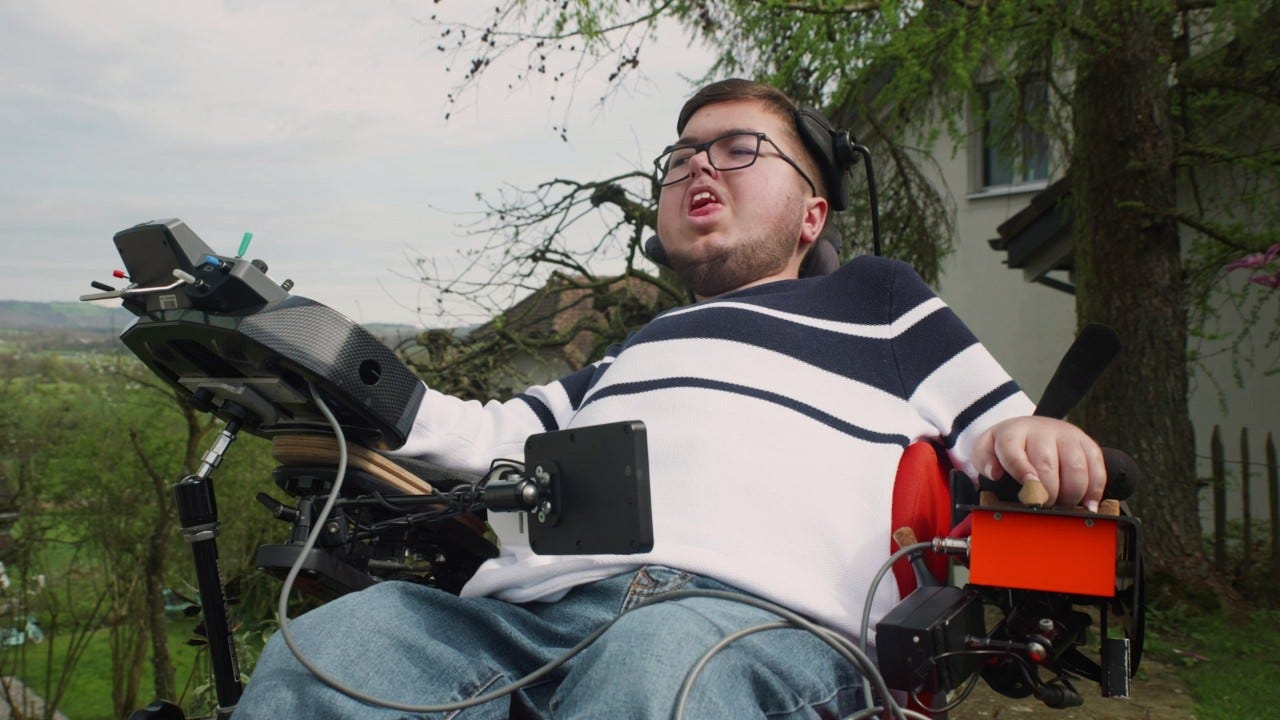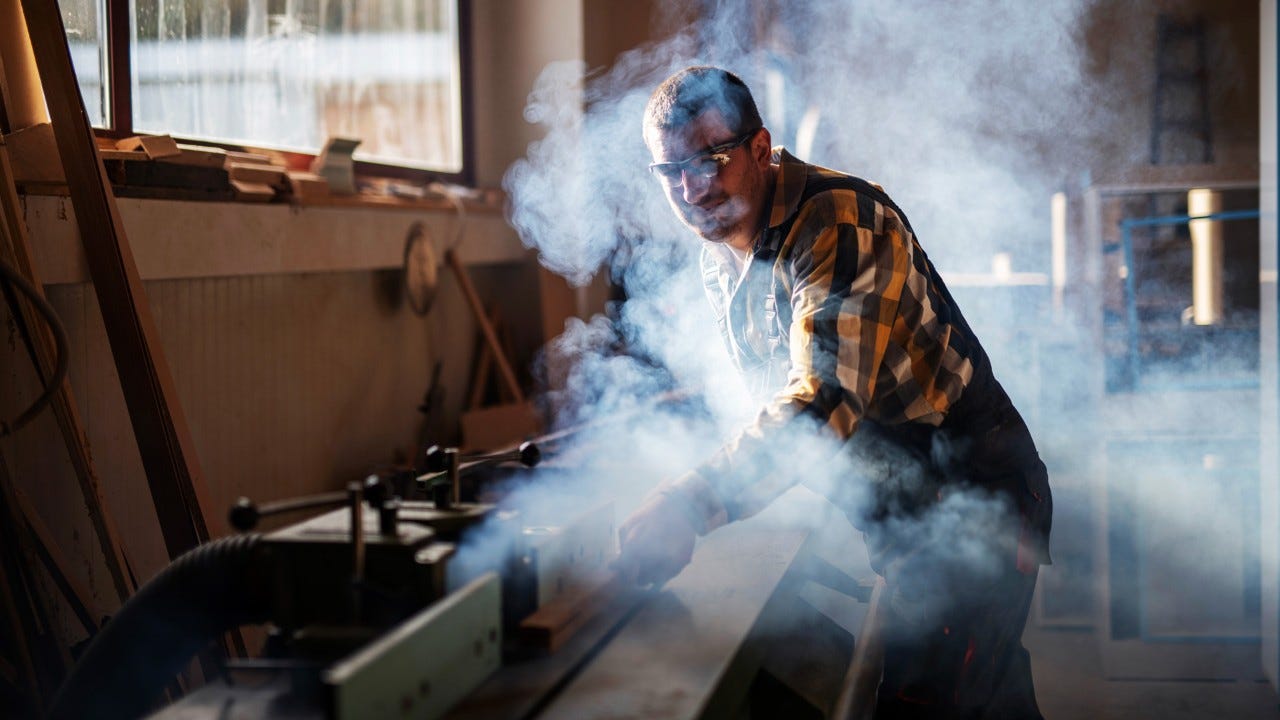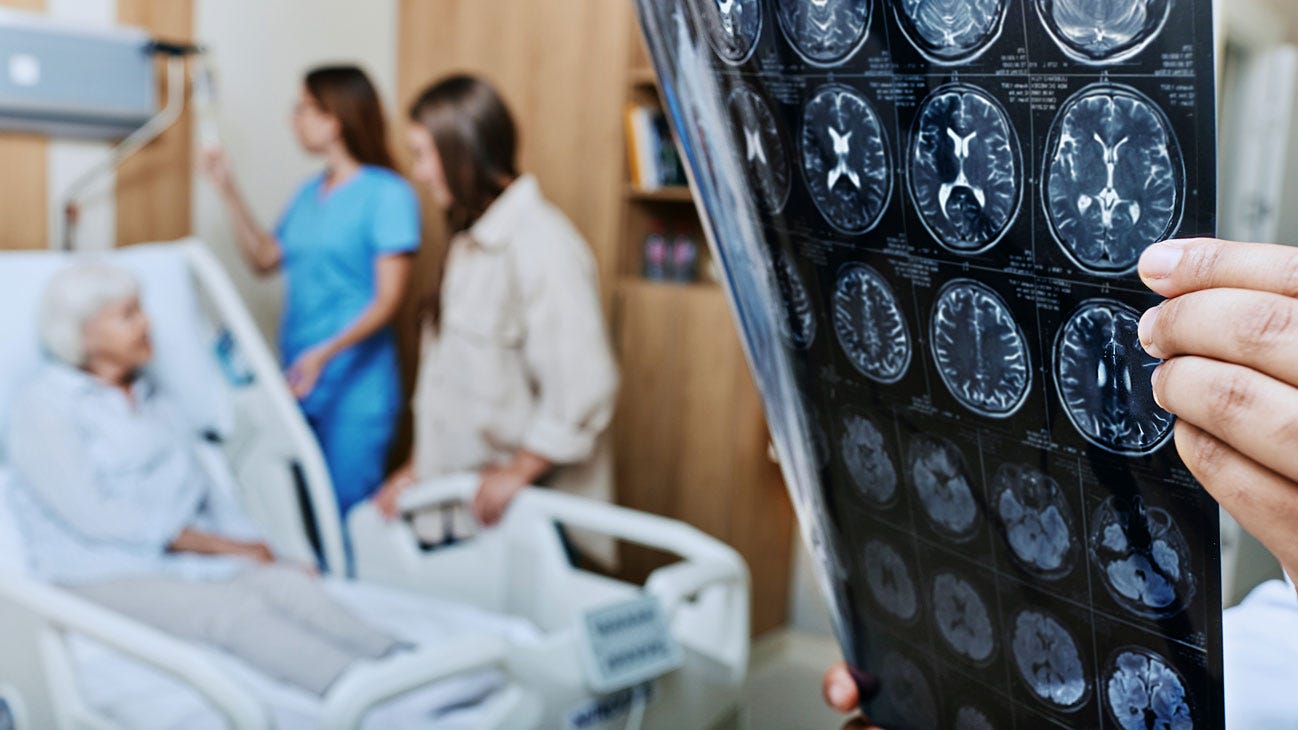What is spinal muscular atrophy?
Spinal muscular atrophy is a genetic condition that causes muscle wastage. In most cases, the first symptoms appear a few weeks to two years after birth.

Spinal muscular atrophy (SMA) is a rare neuromuscular condition that leads to increasing muscle weakness, muscle atrophy and paralysis. In most cases, symptoms occur within the first two years of life. It is a shock for the parents of affected children, because until then there are usually no signs of an impairment or illness. In the past, if SMA went untreated, it led in many cases to severe impairments and ultimately respiratory failure. The children died within a few years. Today, treatments are available that can positively influence or even completely inhibit the course of the disease.
Symptoms of muscular atrophy
Without drug therapy, the muscles slowly break down over time. The muscles closest to the torso, i.e. the shoulders, hips and back, are most affected by muscle atrophy. The symptoms depend on the severity of the condition and the age at which it starts. If SMA occurs at a very early age, babies are unable to develop important motor skills, such as lifting their head or sitting independently. The later the symptoms start, the milder the course of the disease.
In addition to no longer being able to walk or lift their arms with ease, or at all, the muscle loss and weakness also pose additional challenges, such as difficulties eating and swallowing, position-related pain, fatigue, joint misalignments or spinal curvature (scoliosis). In severe cases, the respiratory muscles are also affected, which can lead to respiratory failure. However, SMA has no affect on sensory perceptions such as sight, smell and taste. It also has no impact on cognitive abilities. “Some patients with profound motor impairments still lead a very active professional life. One of our patients, for example, is a lawyer with his own practice, even though he is wheelchair-bound and requires a lot of support with daily tasks,” says Dr Christoph Neuwirth, deputy head of the Muscle Centre at the St. Gallen cantonal hospital. It is one of six competence centres for neuromuscular disorders in Switzerland and a reference centre for rare diseases.
Video: an affected person tells
Course of the disease: different types of spinal muscular atrophy
There are different types of SMA, which are characterised by the age of onset of the disease and the best possible motor function achieved by the patient. The transitions between the types are fluid. SMA type 1 is the most common variant.
-
SMA type 0
The most severe form of SMA affects the foetus in the womb. Newborns will show a lack of muscle tone and respiratory weakness. Most babies with this strain will not live beyond six months. Type 0 is very rare.
-
SMA type 1
Also known as infantile-onset SMA. A diagnosis is usually made within the first six months. Without treatment, children will never be able to sit independently or control their head. Babies have trouble sucking, swallowing and breathing. Without treatment, the life expectancy of children with SMA type 1 is usually two years. Type 1 is the most common.
-
SMA type 2
The first symptoms of SMA type 2 occur between 6 and 18 months of age. Children can sit without support but are unable to stand or walk without help. They present with muscle weakness, often resulting in curvature of the spine (scoliosis). The respiratory and swallowing muscles are also affected. With the right therapy, life expectancy is 10 to 20 years, in some cases even longer.
-
SMA type 3
The juvenile form of SMA can develop between the age of 3 and 19. Patients have difficulty walking, running and climbing stairs. The disease progresses more slowly and with milder symptoms. Life expectancy is hardly limited, but those affected are often dependent on a wheelchair and long-term care in old age.
-
SMA type 4
Type 4 is when the first symptoms of spinal muscular atrophy only occur in young adulthood. Muscle atrophy is slow in this rare form, and the ability to walk is retained. Some patients don’t want treatment at all as they are not worried by their limitations.
What causes spinal muscular atrophy?
Spinal muscular atrophy is a genetic condition that affects the nerve cells that control voluntary muscle movement. For example, if we want to move an arm, the brain sends electrical signals to the arm’s muscles. This happens via two nerve cells connected in sequence. The first are located in the brain, the second in the spinal cord. If these second nerve cells − the motor neurons − no longer work properly, impulses from the brain cannot be sent to the muscle. This causes muscle wastage and paralysis. The decline of motor neurons is caused by a defective gene: the SMNE1 gene. Motor neurons are unable to function without this gene. But there is a back-up: the SMNE2 gene. This gene doesn’t function as effectively as the SMNE1 gene, but it can still help to prevent the nerve cells from completely perishing. Therefore, the more SMNE2 gene copies a person has, the milder the course of the disease.
The condition is usually passed on via autosomal recessive inheritance. This means that it requires one modified gene from each parent. If both parents are carriers of the condition, they have a 1-in-4 chance of having a child with SMA. Although SMA is a rare condition, it is one of the most common autosomal recessive genetic diseases of infancy and early childhood. According to the Deutsche Gesellschaft für Muskelkranke (German association for patients affected by muscle diseases), one in 45 people are carriers of a gene that causes the disease.
What helps with spinal muscular atrophy?
As there is currently no cure for SMA, treatment focuses on easing the symptoms and slowing the progression of the disease for as long as possible. Treatment is based on physiotherapy, occupational therapy, speech therapy and training the respiratory muscles, for example. Recent breakthroughs in the treatment of spinal muscular atrophy involving new drug therapies are giving patients hope.
New treatments for spinal muscular atrophy
The world’s first SMA drugs only came on the market a few years ago. Although it is not possible to restore nerve cells that have already been destroyed, in adults, the drugs help stabilise or even slightly improve the symptoms. Three therapies are currently approved for use in Switzerland. One is a drug that has to be injected directly into the spinal canal and another is a soluble solution that patients have to drink. “Both drugs have a similar function: they modify the SMNE2 gene to make it stronger and more stable. This way, children who would previously have died from SMA can gain important motor skills.” The injections are given every four months, while the soluble solution has to be taken daily.
A novel gene therapy represents a milestone in the treatment of SMA. “In this case, the healthy replacement gene is introduced into the body by viruses and incorporated into the nerve cells. This procedure may also be groundbreaking for other diseases.” It is best to start treatment before the first symptoms appear, as all nerve cells are still intact at this point. For this reason, spinal muscular atrophy has been included in newborn screening in Switzerland.
SMA in adults
Depending on the severity of the condition, other therapies may be necessary, such as physiotherapy, speech therapy or respiratory support through mask ventilation. One advantage of muscle centres, like the one at the St. Gallen cantonal hospital, is the involvement of interdisciplinary teams that are required due to the range of symptoms. In addition, specialist care professionals support adult SMA sufferers with questions about social insurance, the need for aids, care services or ways to relieve the burden on relatives.
Ursula Schneider, head of nursing at the Muscle Centre and a care nurse, is very familiar with the challenges faced by SMA patients. “Adult SMA patients want to live as normal and independent a life as possible. Particularly adult patients, who come to us from the children’s hospital as they get older, want to live alone or in a shared flat. Turning this dream into reality is a process. Even simple things like kerbs and uneven paths put limits on people in wheelchairs.”
Muscle centres are important points of contact for SMA patients and their families. SMA patients require a high level care. “The 30-minute consultation slots aren’t long enough,” says Neuwirth. “The increasing paper work and red tape are eating into the time we can spend with the patients. And things aren’t going to get any easier in the future.”


